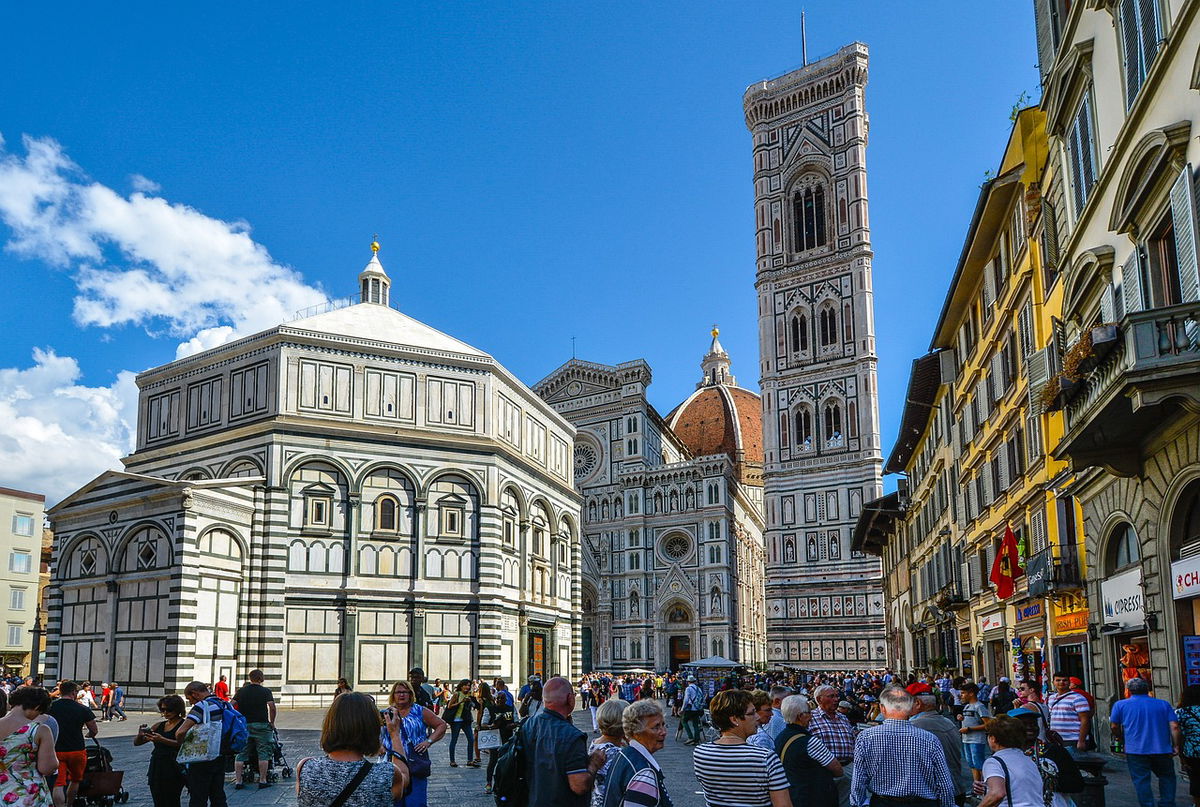


Credit: Pixabay.
For those who prefer to explore a city by foot, Europe offers some of the best urban environments in the world, according to a recent review by Insider Monkey.
From charming medieval streets to modern cultural hubs, European cities have consistently been rated as some of the most walkable destinations globally. Five European cities – Florence, Porto, Hamburg, Riga and Madrid – have earned spots on the list of the most walkable cities for 2024. These cities excel not just in their scenic beauty, but also in safety, cleanliness, and ease of navigation, making them ideal for residents, travellers and expatriates.
At the top of the list is Florence, Italy’s crown jewel of Renaissance history. With its narrow, winding streets and awe-inspiring architecture, Florence is a walker’s paradise. The city’s historic centre, a UNESCO World Heritage site, is home to famous landmarks such as the Duomo, Ponte Vecchio and the Uffizi Gallery. The beauty of Florence lies in its compactness – the top attractions are all within a mere half-mile (0.8 km) radius, allowing visitors to explore the city’s rich history in just a 10-minute walk.
Florence’s air quality score of 44 and its safety index of 60.24 make it a comfortable place for pedestrians, who can wander through clean piazzas and along the scenic Arno River.
Another standout on the list is Porto, Portugal’s second-largest city, known for its colourful houses, narrow cobblestone streets, and rich cultural heritage. Porto’s top landmarks, such as the iconic Dom Luís I Bridge and Livraria Lello, are all located within a 2.2-mile (3.5 km) radius, making the city easy to navigate by foot. Along the way, pedestrians can take in the city’s picturesque views of the Douro River and relax in parks like the Jardin do Palácio de Cristal.
Porto’s walkability is enhanced by its coastal climate, contributing to a decent air quality score of 63. Its safety score is also high, providing a secure environment for walkers to explore freely, whether they’re visiting historic churches or savouring the city’s renowned port wine.
Ranked just behind Porto is Hamburg, Germany’s bustling port city, offering a unique mix of maritime charm and modern urban life. The city’s famous landmarks, including the Elbe River, Miniatur Wunderland and Planten un Blomen park, are all easily accessible on foot. The top five attractions are just 2 miles (3.2 km) apart, meaning you can explore Hamburg’s key sights in about 40 minutes of walking.
Hamburg’s public transport system complements its walkability, ensuring that pedestrians can easily hop on a bus or train if needed. The city also boasts a low air quality score of 22, meaning the air is cleaner and fresher for those taking a leisurely stroll. Although Hamburg has a slightly lower safety score of 57.82, it still offers a secure environment for visitors and locals.
Riga, the capital of Latvia, ranks high for walkability thanks to its seamless blend of medieval allure and modern amenities. The city’s cobblestone streets wind through the UNESCO-listed Vecrīga (Old Town), a neighbourhood packed with history and character. Iconic landmarks like Riga Cathedral, House of the Black Heads, and Riga Central Market are all within 1.5 miles (2.4 km) of each other, making it easy to explore on foot.
Riga also enjoys clean streets and a safe environment, with a safety score of 61.27. The air quality, while moderate at 54, is still conducive to long walks.
Madrid is Spain’s most walkable city, offering sunny weather and a pedestrian-friendly urban layout. The city’s top attractions, including the Royal Palace, Prado Museum and Retiro Park, are all located within a 2.2-mile (3.5 km) radius, making it easy to navigate between historic landmarks on foot.
With an air quality score of 29 and a safety index of 73.16, Madrid ensures that walking is both a pleasant and secure experience. The city is also known for its cleanliness, and its efficient public transportation system complements its walkability and attraction for property investors.
European cities have long been celebrated for their walkable layouts, and it’s no surprise that Florence, Porto, Hamburg, Riga and Madrid all stand out. These cities are not only rich in history and culture, but they also prioritise the pedestrian experience, offering well-maintained streets, safe environments, and compact designs that make it easy to explore on foot.
The convenience of walkable cities provides more than just ease of access – it creates a deeper connection to the places they call home or visit. In these cities, every corner turned brings a new discovery. So, if you’re planning your next trip or considering a new place to live, these walkable European cities should be at the top of your list.
Read the full review by Insider Monkey.